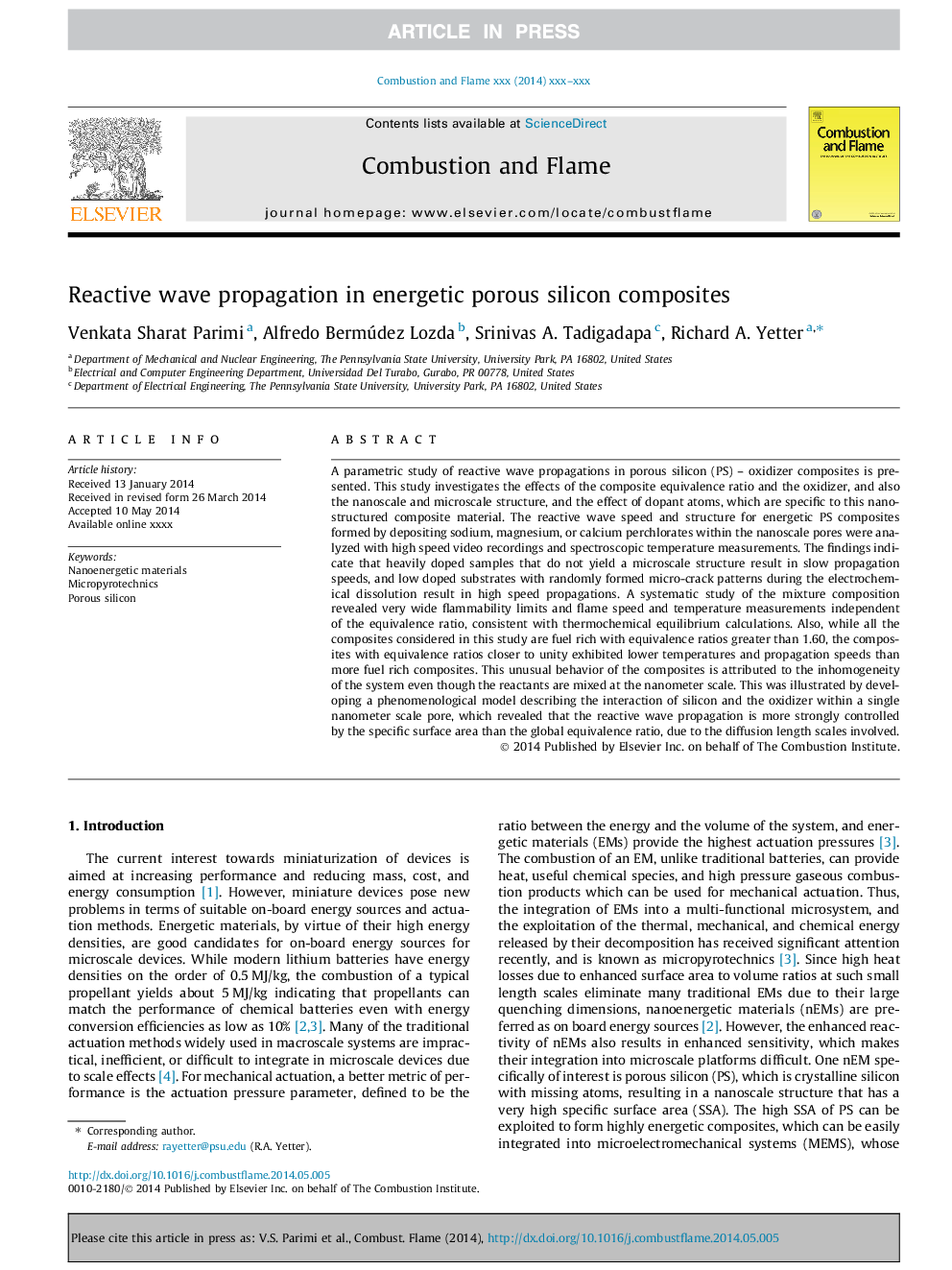| Article ID | Journal | Published Year | Pages | File Type |
|---|---|---|---|---|
| 10264351 | Combustion and Flame | 2014 | 9 Pages |
Abstract
A parametric study of reactive wave propagations in porous silicon (PS) - oxidizer composites is presented. This study investigates the effects of the composite equivalence ratio and the oxidizer, and also the nanoscale and microscale structure, and the effect of dopant atoms, which are specific to this nanostructured composite material. The reactive wave speed and structure for energetic PS composites formed by depositing sodium, magnesium, or calcium perchlorates within the nanoscale pores were analyzed with high speed video recordings and spectroscopic temperature measurements. The findings indicate that heavily doped samples that do not yield a microscale structure result in slow propagation speeds, and low doped substrates with randomly formed micro-crack patterns during the electrochemical dissolution result in high speed propagations. A systematic study of the mixture composition revealed very wide flammability limits and flame speed and temperature measurements independent of the equivalence ratio, consistent with thermochemical equilibrium calculations. Also, while all the composites considered in this study are fuel rich with equivalence ratios greater than 1.60, the composites with equivalence ratios closer to unity exhibited lower temperatures and propagation speeds than more fuel rich composites. This unusual behavior of the composites is attributed to the inhomogeneity of the system even though the reactants are mixed at the nanometer scale. This was illustrated by developing a phenomenological model describing the interaction of silicon and the oxidizer within a single nanometer scale pore, which revealed that the reactive wave propagation is more strongly controlled by the specific surface area than the global equivalence ratio, due to the diffusion length scales involved.
Related Topics
Physical Sciences and Engineering
Chemical Engineering
Chemical Engineering (General)
Authors
Venkata Sharat Parimi, Alfredo Bermúdez Lozda, Srinivas A. Tadigadapa, Richard A. Yetter,
